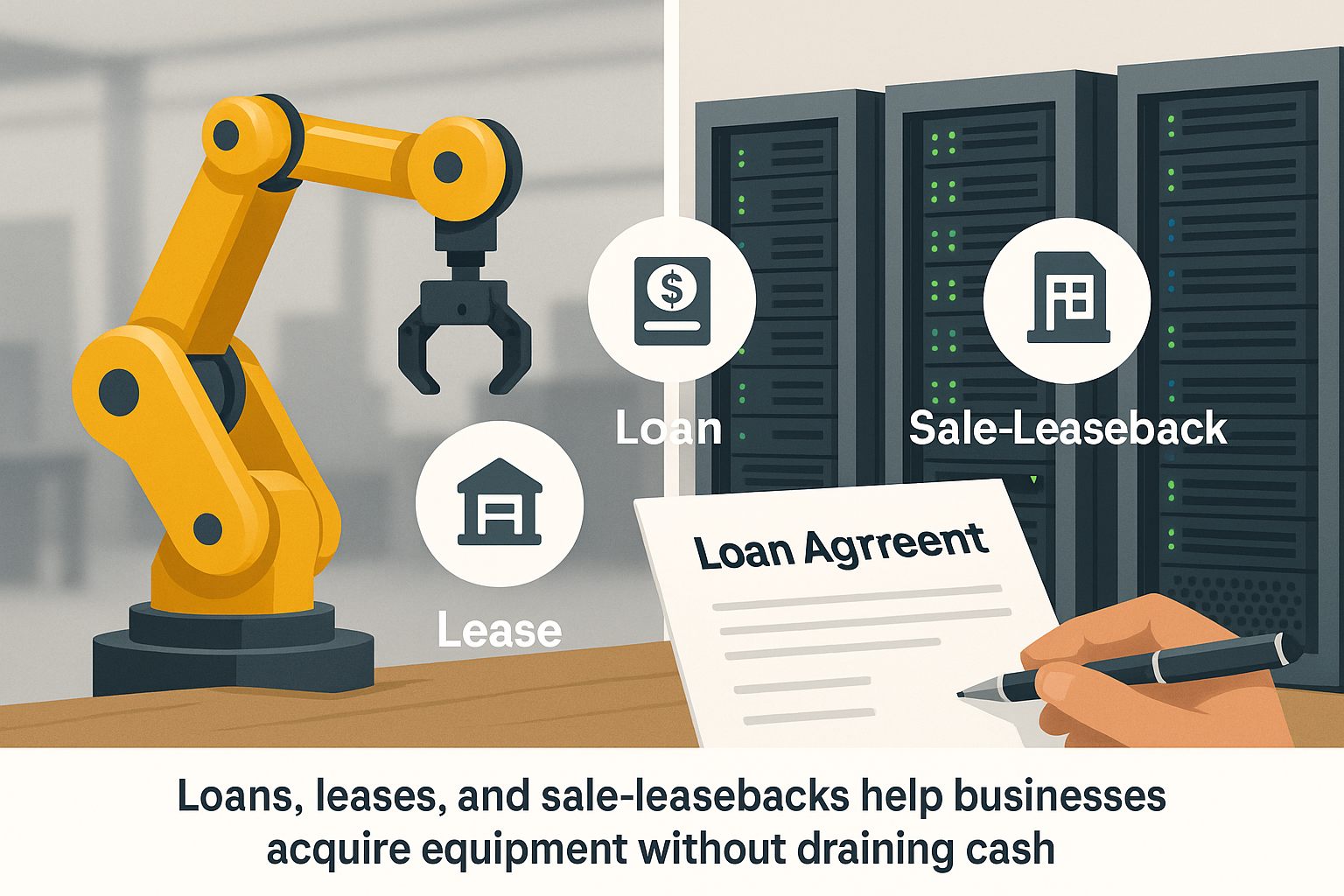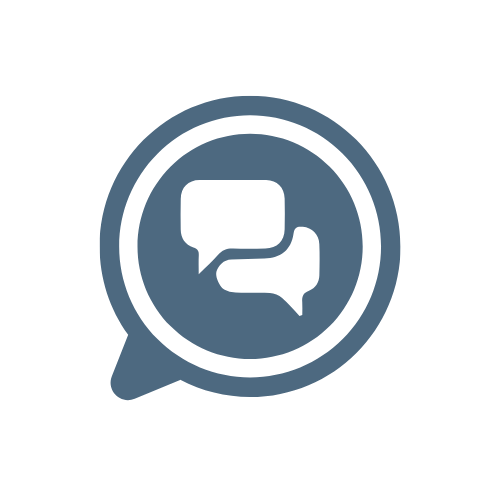1 (800) 584-0324
From excavators on a construction site to servers in a data center, acquiring equipment is one of the biggest investments a business makes. Instead of draining cash reserves, companies often turn to equipment financing like leasing to spread costs, preserve liquidity, and match payments with revenue.
This guide explains the main structures—loans, leases, hire-purchase, and sale-leaseback—so you can choose the right option for your business.
What Is Financement d'équipement?
Equipment financing refers to using debt or lease structures to acquire equipment while spreading payments over time. It allows businesses to:
- Conserve cash flow
- Access modern technology
- Match expenses with equipment usage and revenue cycles
- Retain working capital for operations and growth
4 Main Types of Equipment Financing
1) Equipment Loans
- Structure: A lender provides a lump-sum loan to purchase equipment. You repay in installments, and once the loan is repaid, you own the equipment.
- Advantages:
- Ownership builds equity
- Interest and depreciation may be tax deductible
- Often secured by the equipment itself
- Ownership builds equity
- Best for: Businesses planning to use equipment long-term.
2) Equipment Leasing
- Structure: You rent the equipment from a lender or leasing company for a set period. At the end, you may return, renew, or purchase the asset at fair market value.
- Advantages:
- Lower upfront costs
- Flexibility to upgrade as technology changes
- Lease payments often fully deductible as expenses
- Lower upfront costs
- Best for: Companies with rapidly evolving technology (IT, medical devices).
3) Hire-Purchase Agreements
- Structure: Similar to a lease, but with a fixed option to purchase at the end of the term (often for a nominal fee).
- Advantages:
- Combines predictable lease-style payments with guaranteed ownership
- Tax benefits similar to loans
- Combines predictable lease-style payments with guaranteed ownership
- Best for: Businesses that eventually want ownership but need cash flow flexibility upfront.
4) Equipment Sale-Leaseback
- Structure: Sell equipment you already own to a lender and lease it back. You keep using the equipment while unlocking tied-up capital.
- Advantages:
- Immediate cash injection
- Retain use of critical assets
- Can help refinance or restructure debt
- Immediate cash injection
- Best for: Businesses needing liquidity without disrupting operations.
Equipment Financing vs Leasing: Key Differences
| Factor | Equipment Loan/Hire-Purchase | Lease/Sale-Leaseback |
| Ownership | Yes, after repayment | No (unless buyout option) |
| Upfront Costs | Usually down payment | Minimal |
| Flexibility | Lower (fixed ownership) | Higher (upgrades, returns) |
| Tax Treatment | Depreciation + interest | Lease expense deduction |
| Best For | Long-term asset use | Short-term/fast-changing assets |
Industries That Rely on Equipment Financing
- Construction: Excavators, cranes, trucks
- Manufacturing: Machinery, robotics, automation systems
- Healthcare: Imaging devices, surgical tools, lab equipment
- IT & Tech: Servers, networking gear, software licenses
- Transportation & Logistics: Fleets, warehouse systems
✅ Tip: Many vendors offer built-in financing programs, but comparing vendor financing with independent lenders ensures you get competitive terms.
How to Qualify for Equipment Financing
Lenders typically review:
- Time in business and credit score
- Financial statements and cash flow coverage
- Equipment value and useful life
- Collateral (equipment itself often serves as security)
Startups may face stricter requirements but can sometimes qualify through vendor programs or leasing.
Risks for Banks in Equipment Financing Transactions
Banks face several risks when financing equipment purchases. The most significant is credit risk—the borrower may default, leaving the bank with an impaired loan. Closely tied to this is asset risk: the financed equipment often serves as collateral, but its value can depreciate quickly due to technological changes, heavy use, or poor resale markets. Banks also face operational and legal risks, such as incomplete documentation or disputes over ownership and guarantees. Additionally, industry risk plays a role—if the borrower’s sector faces downturns, repayment capacity weakens. Finally, concentration risk arises when banks finance too many clients in the same industry, amplifying exposure to market cycles.
U.S. vs. Canada Context
- U.S.: SBA 7(a) and 504 loans can be used for equipment. Private lenders and equipment finance companies dominate the market.
- Canada: The Canada Small Business Financing Program (CSBFP) supports equipment loans. BDC also offers specialized equipment financing.
Both markets also see strong private credit activity, particularly in industries like construction and healthcare.
Need to finance new equipment or unlock capital from existing assets? At Agile Solutions, we structure equipment financing across U.S. and Canadian lenders, from loans to leases and sale-leasebacks.
👉 Book a consultation today at agilesolutions.global or email us at info@agilesolutions.global
EquipmentFinancing #BusinessLoans #Leasing #SaleLeaseback #WorkingCapital #SBALoan #BDC #CSBFP #CapitalMarkets



